Marvell at FMS 2019: NVMe Over Fabrics Controllers, AI On SSD
by Billy Tallis on August 16, 2019 12:00 PM EST
Prior to Flash Memory Summit, Marvell unveiled their first generation of client SSD controllers supporting PCI Express 4.0. During the show itself, their focus was much more on the datacenter. Marvell's recent history of buying and selling various business units has made it clear that datacenter networking is one of their highest priorities, and that's affecting their strategy for datacenter storage. They are strong proponents of the NVMe over Fabrics standard that is in the process of displacing all other SAN protocols.
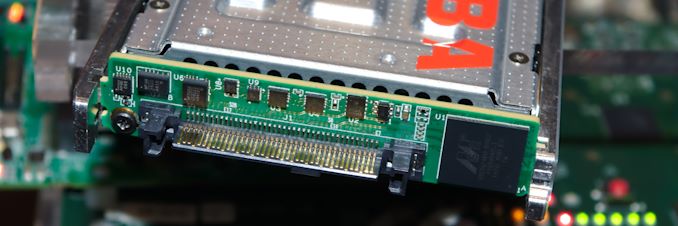
Last year: NVMe to Ethernet converter on interposer board
Last year, Marvell announced an NVMe to Ethernet converter that allows an individual NVMe SSD to be connected directly to an Ethernet network, making the SSD accessible through NVMeoF. At first, this converter was demoed on small interposer boards that sit between standard U.2 SSDs and an Ethernet-capable backplane. This year, Marvell and Toshiba showed off a fully integrated Ethernet SSD that adds the Marvell 88SN2400 converter to Toshiba's existing SSD design. Mechanically, this drive appears to be a 2.5" U.2 or U.3 SSD, but electrically its host interface is a pair of 25Gb Ethernet links instead of four PCIe lanes.
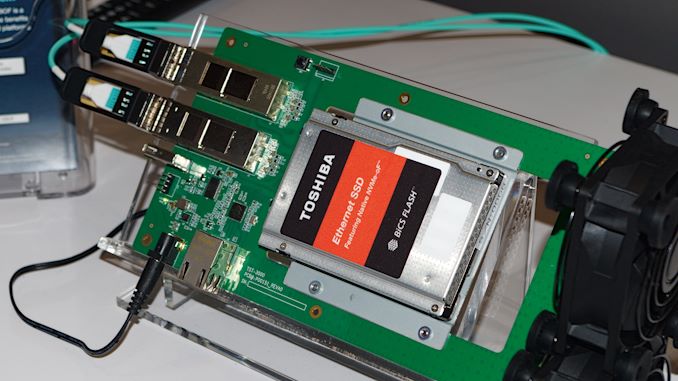
This year: NVMe to Ethernet converter built-in
These drives have not been formally launched by Toshiba as a shipping product, but they were described as production-ready and were demonstrated in a 24-drive 2U Ethernet JBOF appliance built by Aupera. A typical NVMe JBOF either uses PCIe switches and external PCIe cabling to a few nearby servers, or it contains one or two x86 server CPUs, some PCIe switches from Broadcom or Microsemi and some RDMA-capable Ethernet NICs from Mellanox to provide NVMe over Fabrics functionality. The Ethernet JBOF ditches all of that for one of Marvell's own Ethernet switch ASICs.
Taking things to the logical next step, Marvell also announced a native Ethernet/NVMeoF SSD controller. The 88SS5000 is effectively their 88SS1098 NVMe controller with the PCIe interface replaced by the dual 25GbE interface used by the NVMe to Ethernet converter. This new single-chip solution for Ethernet-attached SSDs helps cut costs and power consumption, making the whole idea more palatable to datacenter customers. Marvell showed samples of this controller paired with 8TB of Toshiba 96L 3D TLC NAND and 12GB of DDR4 DRAM.
Machine Learning On The SSD
Looking further into the future, Marvell shared their take on the idea of Computational Storage—SSDs that do more than just store data. Marvell is working to integrate a Machine Learning engine into future SSD controllers, allowing inferencing tasks to be offloaded from CPUs or GPUs onto the SSDs that already store the data being processed. The hardware setup is basically the same mess of cables connecting FPGAs to Flash that Marvell has shown in previous years, but on the software side their demo has matured greatly.
In addition to demonstrating realtime object recognition using a pre-trained model, Marvell now has a system to perform offline recognition on videos stored on the SSD. Their demo presented the results of this recognition as a graph showing which objects were recognized over the duration of a video. There was also a content-aware search engine that would return the segments of stored videos that depict the requested objects. For the demo, this functionality was exposed through a simple web interface. In production, the envisioned use case is to have an application server aggregating results from an array of content-aware SSDs that each perform some kind of analytics on their share of the overall dataset.


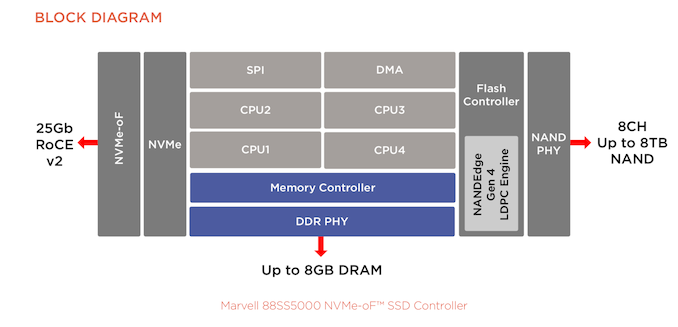
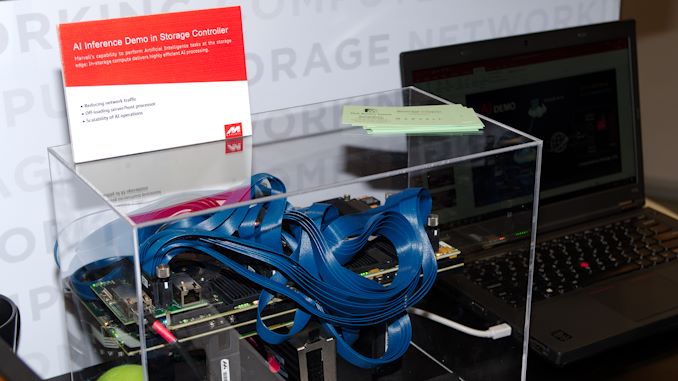

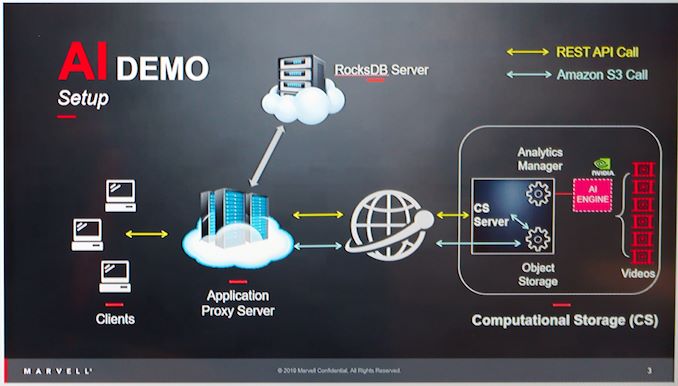








5 Comments
View All Comments
GreenReaper - Friday, August 16, 2019 - link
Heh. Talk about network-attached storage! Not sure how much intelligence I want on my storage device, but they're already doing a fair bit of work so maybe there's slack capacity.CajunArson - Friday, August 16, 2019 - link
Yes, but what about DC?nathanddrews - Friday, August 16, 2019 - link
I was thinking maybe the machine learning ("AI") would be rooted in optimizing the access/transfer speeds for different file types in different use cases or for different power consumption targets or something cool like that. I don't need my devices dialing home any more than they already do.Billy Tallis - Friday, August 16, 2019 - link
Innogrit is taking that kind of approach with their Tacoma controller, using a neural net to predict which data will be hot vs cold so that it can optimize data placement.YB1064 - Wednesday, August 21, 2019 - link
Link to the NVMe over Fabric standard for those interested.https://nvmexpress.org/wp-content/uploads/NVMe_Ove...
https://nvmexpress.org/wp-content/uploads/NVMe_ove...
Some useful slides:
https://www.snia.org/sites/default/files/ESF/Lets-...
https://www.openfabrics.org/images/eventpresos/wor...